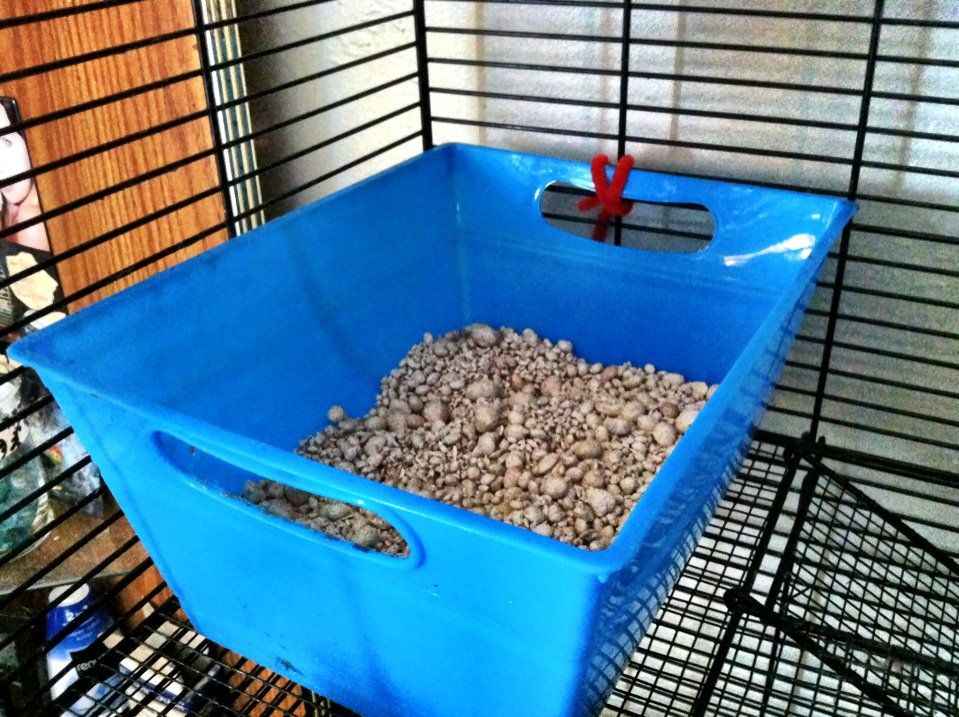In the past, I posted about my litter training failure. After some trial and error, my boys were finally litter trained.
The things you’ll need to begin litter training are:
– rats
– litter box
– litter
– some old poop
READ MORE: How to Socialize New Rats
Litter Training a Rat
The first thing to do is look around your dirty rats cage (can be conveniently done before a cleaning) and see where they seem to be going the most.
It’ll be really hard to train a rat to pee in one area (though some rats will take well to it) but you can definitely control their pooping.
Place the litter box in the area with the most waste (after cleaning the cage, of course). Fill the box with litter. It’s important to use a different litter than what you’d normally use for bedding.
So CareFresh living area should not be combined with a CareFresh litter box. I use newspaper for my rats living area, and Yesterday’s News in their litter box.
When everything is set up and ready for the rats to live in, place some old poop (this is the reason to set up a litter box right after cleaning… nothing is more boring than waiting for my rats to poop when I want them to).
READ MORE: How to Target Train Pet Rats

The old poop will give them an idea that “Oh there’s poop in there.”
After you have the new litter box implemented in a freshly clean cage, place your rats back in. Several times during the day, go into your rats’ cage and look around the living areas to see if there’s any stool.
ALSO SEE: Encouraging Good Behavior in Rats
If you find pieces outside of the litter box, place them back into the litter box. Repeat the cleaning of poop until they get the idea.
I left the litter box dirty for a week. I wanted to make sure it was the stinkiest place my rats ever smelled. And it really sent the message and they picked up on how to use the litter box within the first few days.




